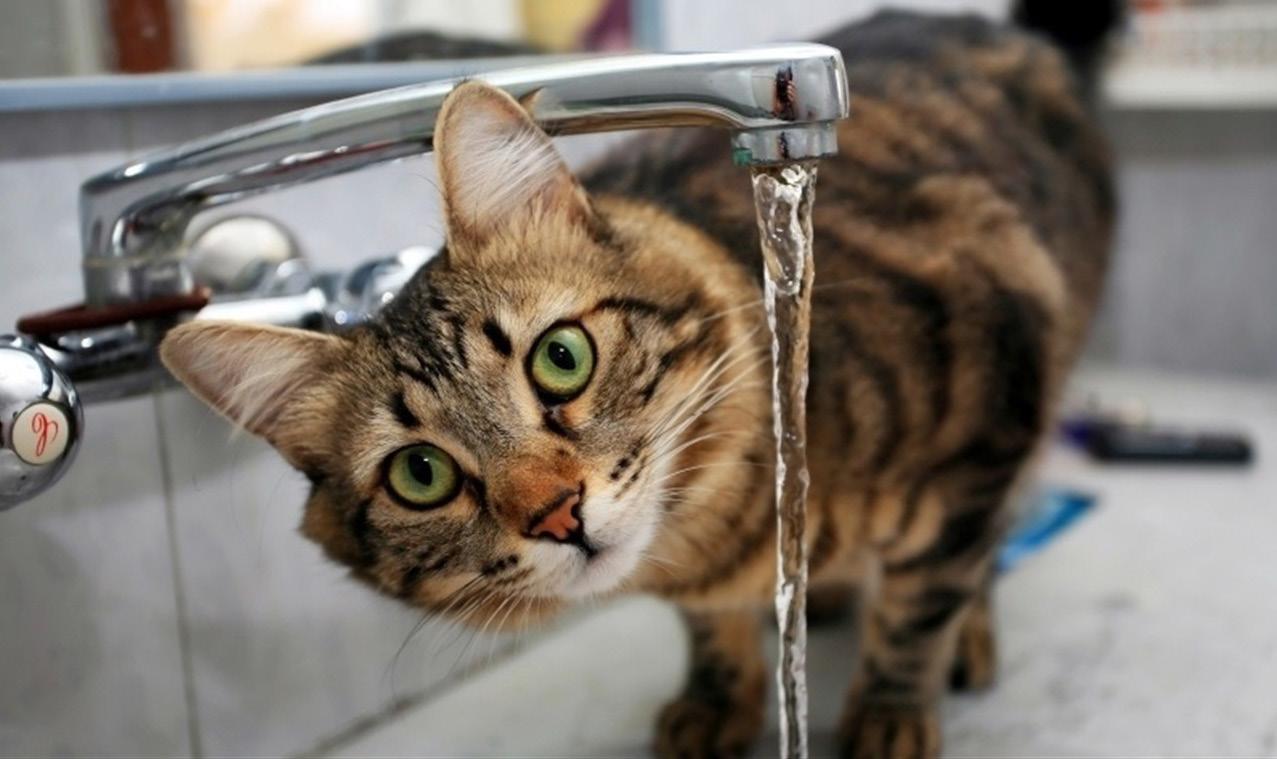
3 minute read
Choosinga baby carrier
from SOUTH June 2020
by Times Media
BEHAVIOURAL TRICKS TO KEEP CATS HAPPY
DrNikki Frost BSc BVSc MANZCVS (Medicine of Cats), seniorvet at Franklin Vets Pukekohe talks about helpingkeep cats destressed and happy.
Cats haven’t been domesticated that longcompared to other domestic species and so their behaviour is still very similar to that ofwild cats. As a result, keepinga cat in a domestic environment can cause stress and there are some simple things we can do to help reduce this.
➊ Don’t feed cats together. Even colony cats won’t share kills. Cats should have theirown feeding spaces where they can eat without seeingthe othercat eating–two bowls, side by side, equals one feedingspot. This rule also applies to otherresources such as water bowls and littertrays.
➋ Don’t put food and water bowls next to each other. In the wild cats don’t want to contaminate their water supply with a dead carcass so they prefer to eat away from the water source.
➌ Speakingofwater, a lot of cats prefer runningwater as stagnant water is more likely to be contaminated. It explains why a lot ofcats prefer to drinkout of the runningtap. Water fountains are a way ofreplicatingthis.
➍ Don’t put littertrays next to the food and water source. No-one wants to eat or drinkwhere they toilet. Litter trays should be in a quiet, private space where cats can toilet without anyone watchingthem.
➎ Provide restingplaces with a view. Cats like to be high up so they can watch their surroundings to monitor for danger coming. Cat trees are great for this.
➏ Provide toys which are consistent with a cat’s hunting behaviour. Cats are taught by their mothers to hunt the species that their mothers prefer to hunt, be it birds or ground creatures. Cats preference for toys comes from this. The ones who are taught to hunt birds will prefer toys on a wand which they catch in the air, kittens who are taught to catch prey species, such as mice, prefer toys that move around on the floor like balls.
Need a vet?

Franklin Vets Papakura and Pukekohe are open 7 days and late nights
CARRYING baby SAFELY

A baby carrier is a mum’s best friend – it keeps her hands free for chores or shopping but also keeps baby close.
There are various baby carrier options, from specialised backpacks to fabric wraps, with some families havinga couple ofdifferent types for different activities and for different stages ofan infant’s growth.
These practical devices are great for babies as they provide comfort, can aid with digestion, facilitate sleep and promote proper muscle and joint development. However, it’s important to take precautions.
Here are some baby carrier safety tips to look out for:
• LOOK FOR WEAR AND TEAR: Ifdiggingout a pre-loved carrier for a second or third child checkfor ripped seams, damaged buckles and torn straps. This checkshould be ongoingbefore each use. If optingfor a sling-style carrier, make sure the knots are tied tight or the fabric is securely fastened in the rings.
• PROPERLY POSITION YOUR BABY: Ababy carrier should be snug
enough to provide ample backsupport. While there are ergonomic carriers which allow baby to face forward, these should be avoided until your little one has full control ofits head and neck. To reduce the riskofhip dysplasia, make sure the carrier supports your baby’s thighs while keepingthe legs bent and the knees slightly higher than their hips.
• CHECK YOUR BABY OFTEN: To eliminate the riskofsuffocation, your child’s face should be visible at all times. Make sure the mouth isn’t pressed into the carrier or your body. Additionally, baby’s chin shouldn’t be tucked into its chest and legs shouldn’t be bunched against their stomach. Any ofthese positions can restrict baby’s breathing.
• LIMIT YOUR ACTIVITIES: Ifyou’re baby-carrying, avoid slippery
areas and activities that could lead to a fall such as cycling, skating and running. You should also avoid usingyour baby carrier while cookingor drinkinghot beverages because it puts your child at riskofbeingburned orinjured. Before you purchase a baby carrier, test out various models to ensure you choose the right one for you and your infant.
While front wearingstyle are most used for newborns and young infants, as baby grows and is able to sit, a backpack, perhaps suitable for dad’s back, is great for outdoor walks.










